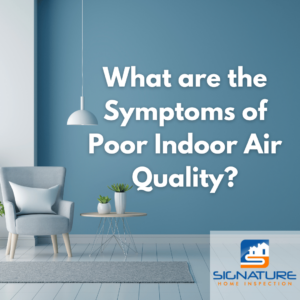What are the Symptoms of Poor Indoor Air Quality?
Indoor air quality is crucial to a healthy living environment. Poor indoor air quality can lead to a range of health issues, affecting both comfort and well-being. In this blog post, we’ll explore the common symptoms of poor indoor air quality and why addressing them promptly is essential.
Common Symptoms of Poor Indoor Air Quality
Experiencing symptoms related to poor indoor air quality can be distressing. Here are some of the most common indicators:
Respiratory Issues
Coughing, sneezing, and shortness of breath are the most prevalent symptoms. These issues can be exacerbated for individuals with asthma or allergies. If you notice persistent respiratory problems, it’s essential to consider indoor air quality as a potential cause.
Headaches and Fatigue
Prolonged exposure to poor indoor air quality can lead to frequent headaches and general fatigue. These symptoms are often overlooked but can significantly impact your daily life. If you feel unusually tired or are experiencing regular headaches, the air quality in your home could be a contributing factor.
Allergic Reactions
Itchy eyes, runny nose, and skin rashes indicate poor indoor air quality. These allergic reactions are usually due to dust mites, mold, and other airborne contaminants. If you or your family members experience these symptoms, it might be time to assess your indoor environment.
Impact on Children and Elderly
Children and older people are particularly vulnerable to poor indoor air quality. Their immune systems are either still developing or weakened, making them more susceptible to the adverse effects of pollutants. Symptoms such as frequent colds, respiratory infections, and allergic reactions can be more severe in these groups.
Long-term Effects of Poor Indoor Air Quality
Ignoring the symptoms of poor indoor air quality can lead to more severe health problems over time, including chronic respiratory conditions and cardiovascular issues. Ensuring good indoor air quality is about immediate comfort and long-term health. Chronic exposure to indoor air pollutants has been linked to heart disease, lung cancer, and other severe health conditions.
What Can You Do?
Improving indoor air quality involves regular maintenance and inspections. Here are some steps you can take:
- Ensure Proper Ventilation: Make sure your home has adequate ventilation to allow fresh air to circulate and reduce the concentration of indoor pollutants.
- Use Air Purifiers: Invest in high-quality air purifiers to remove contaminants.
- Regular Cleaning: To minimize dust, mold, and other allergens, keep your home clean. Vacuum regularly and use a HEPA filter.
- Check for Mold: Mold can be a significant source of indoor air pollution. Regularly inspect areas prone to moisture, such as bathrooms and basements, and promptly address mold issues.
- Maintain HVAC Systems: Regularly service your heating, ventilation, and air conditioning (HVAC) systems to ensure they are functioning correctly and not contributing to indoor air pollution.
If you’re concerned about the air quality in your home, don’t wait until the symptoms worsen. Contact Signature Home Inspection for a comprehensive indoor air quality inspection today. Our expert team will assess your home and provide you with solutions to ensure you and your family breathe easier. Breathe easier knowing your home is safe for you and your family.




Leave a Reply
Want to join the discussion?Feel free to contribute!